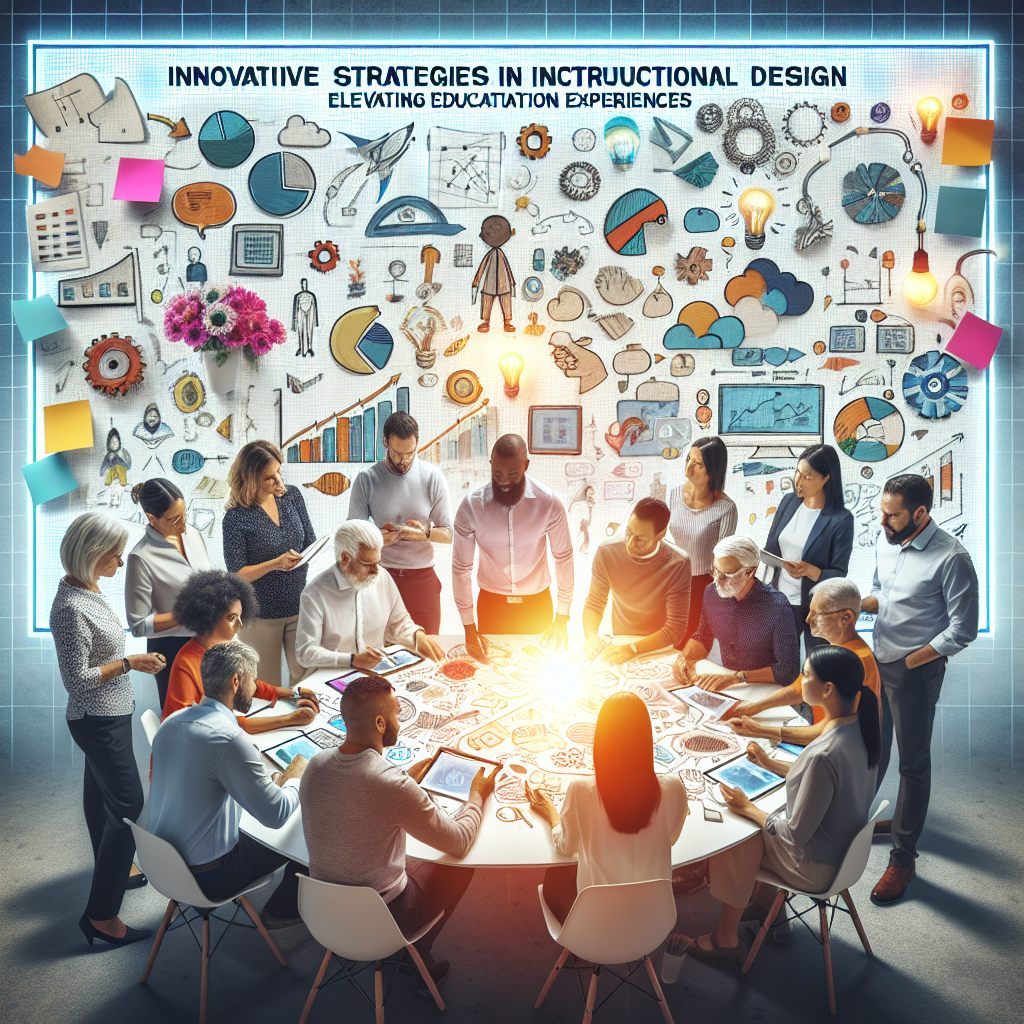Introduction
In an era where educational paradigms are constantly shifting, the need for Innovative Strategies in Instructional Design: Elevating Educational Experiences has never been more critical. As learning environments evolve—from traditional classrooms to virtual settings—educators and instructional designers must adapt to meet the demands of today’s diverse learners. This article explores innovative approaches, techniques, and tools that transform educational experiences, making learning more engaging, personalized, and effective.
The Landscape of Instructional Design
Understanding Instructional Design
Instructional design is the systematic process of creating educational experiences by integrating concepts of pedagogy, psychology, and user experience. The goal is to enhance learning effectiveness and efficiency. With advancements in technology, we observe a shift toward more innovative strategies that prioritize learner engagement and outcomes.
The Need for Innovation
In a fast-paced world, traditional teaching methods often fall short. The modern learner is tech-savvy, expects interactive content, and thrives on collaboration. Therefore, it is essential for educational institutions and businesses alike to embrace Innovative Strategies in Instructional Design: Elevating Educational Experiences to better cater to these familiar complexities.
Innovative Strategies in Instructional Design
1. Personalized Learning Paths
Overview:
Personalization in education allows learners to proceed at their own pace and choose topics of interest, leading to heightened engagement and success.
Case Study:
An online learning platform introduced adaptive quizzes that adjust difficulty based on student performance. As a result, completion rates increased by 40%. This example speaks volumes about how personalized learning directly correlates with better educational experiences.
| Personalized Learning Benefits | Results |
|---|---|
| Students feel more in control | Higher engagement |
| Improved retention and satisfaction | 30% increase in performance |
2. Gamification Techniques
Overview:
Using game-based elements, such as points, leaderboards, and badges, can motivate learners to engage deeply with content.
Case Study:
A corporate training program implemented gamification strategies, and found a 50% increase in participation. Employees reported a sense of achievement, making their learning journey more fulfilling.
| Gamification Elements | Impact |
|---|---|
| Points and rewards | Increased motivation |
| Collaborative challenges | Enhanced teamwork |
3. Flipped Classroom Models
Overview:
Flipped classroom strategies encourage students to review lecture materials at home, freeing up class time for discussion and hands-on work.
Case Study:
A research university employed a flipped classroom model in its biology course, resulting in a 25% increase in exam scores and improved student satisfaction. This approach emphasizes active learning, a crucial element of Innovative Strategies in Instructional Design: Elevating Educational Experiences.
| Flipped Classroom Benefits | Outcomes |
|---|---|
| Enhanced student engagement | 25% higher scores |
| Increased collaboration | Improved social skills |
4. Utilization of Technology
Overview:
Incorporating various technologies—like Virtual Reality (VR), Augmented Reality (AR), and Artificial Intelligence (AI)—creates immersive learning experiences.
Case Study:
A medical school employed VR simulations in clinical training, improving hands-on skills before real-life applications. This not only prepared students better but also increased their confidence by 30%.
| Technology Used | Effect |
|---|---|
| VR for simulations | Skill enhancement |
| AI for personalized instruction | Tailored learning experiences |
5. Collaborative Learning Environments
Overview:
Fostering collaboration through group projects and peer-to-peer interactions enhances the learning process as students learn from each other.
Case Study:
A high school implemented a collaborative project in their history curriculum, increasing critical thinking skills and creating a supportive learning environment. The outcome was a marked improvement in soft skills—essential in today’s workforce.
| Collaboration Techniques | Benefits |
|---|---|
| Group projects | Improved engagement |
| Peer feedback | Enhanced critical thinking |
The Impact of Current Trends on Instructional Design
Microlearning
Overview: Short, focused segments of learning that cater to busy schedules have gained prominence. Microlearning fits well with the Innovative Strategies in Instructional Design: Elevating Educational Experiences as it encourages quick, digestible learning without overwhelming the learner.
Mobile Learning
Overview: As mobile device usage surges, optimizing content for mobile learning expands educational accessibility and flexibility. Learners can engage anytime, anywhere—a key component in elevating educational experiences.
Inclusive Design
Overview: Emphasizing inclusive design strategies ensures that content is accessible to all learners. This inclusivity not only enhances understanding but also fosters a sense of belonging.
Conclusion
The domain of instructional design is ever-evolving, and the importance of Innovative Strategies in Instructional Design: Elevating Educational Experiences cannot be overstated. By adopting personalized learning paths, gamification techniques, flipped classrooms, and modern technologies, educators can create impactful learning experiences that resonate with today’s learners.
Actionable Insights for Implementation
- Experiment and Iterate: Don’t hesitate to try new strategies, assess their impact, and refine your approach.
- Engage Learners: Make learning more interactive and enjoyable through simulations, games, and collaboration.
- Stay Informed: Keep up with current trends to adapt your strategies and technologies accordingly.
FAQs
1. What are some examples of innovative instructional design strategies?
Ans: Some of the most effective strategies include personalized learning paths, gamification, flipped classrooms, and the use of emerging technologies like VR and AR.
2. How can teachers implement gamification in their classrooms?
Ans: Teachers can start by introducing point systems for assignments, creating competition through leaderboards, and providing badges for achievements.
3. What role does technology play in modern instructional design?
Ans: Technology enhances engagement and accessibility, making learning more interactive and personalized. Virtual environments and AI tools are becoming valuable assets in instructional design.
4. How does inclusive design affect student learning?
Ans: Inclusive design ensures that all learners, regardless of their abilities, have access to educational resources, fostering equity and engagement in the learning process.
5. Why is feedback important in instructional design?
Ans: Feedback allows educators to understand the effectiveness of their strategies and provides learners with insights into their performance, promoting continuous improvement.
Through innovative instructional design strategies, we can elevate educational experiences, making learning more effective, enjoyable, and inclusive for everyone. By adopting these practices and remaining flexible in our approaches, we pave the way for a brighter future in education.

